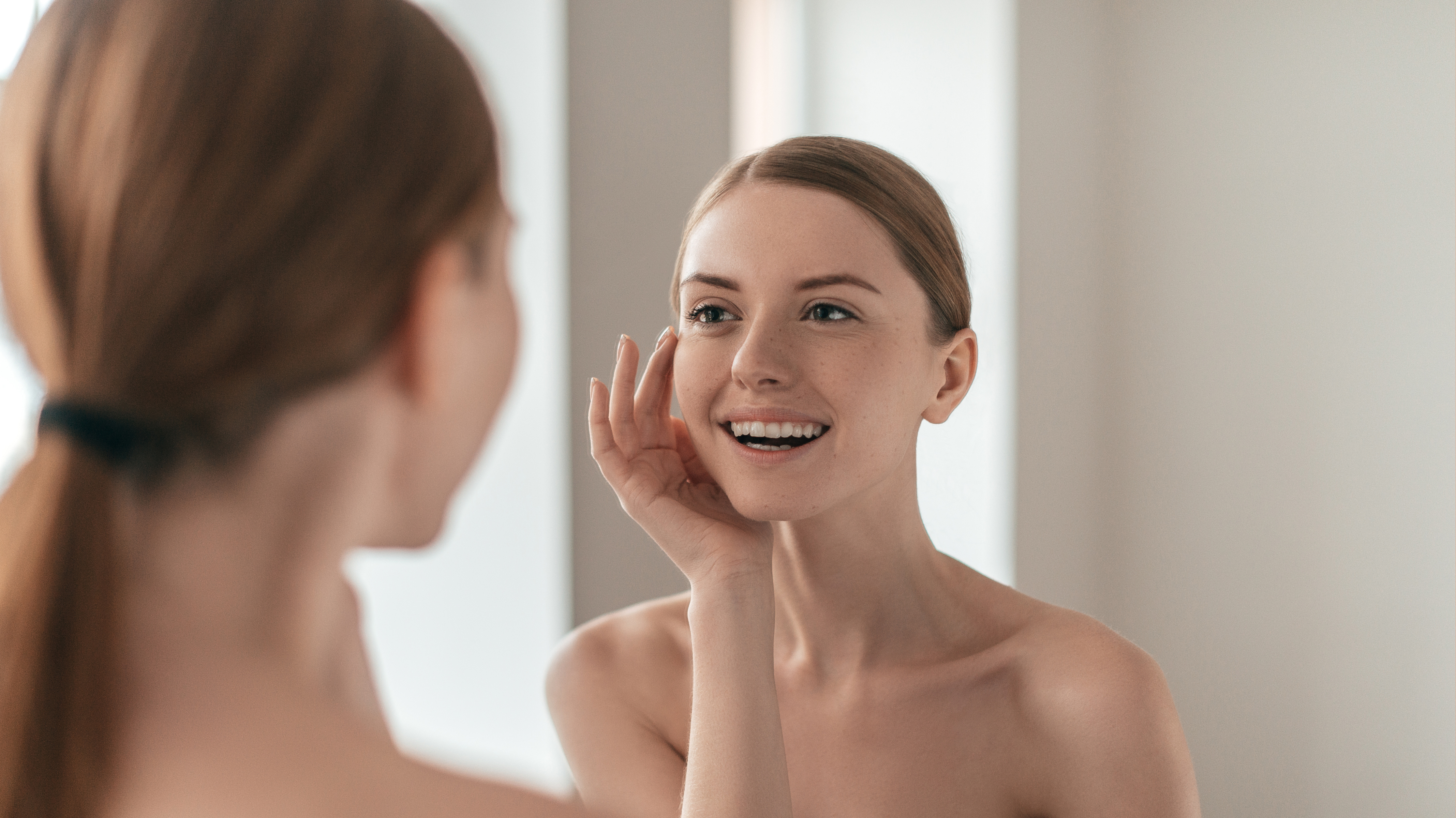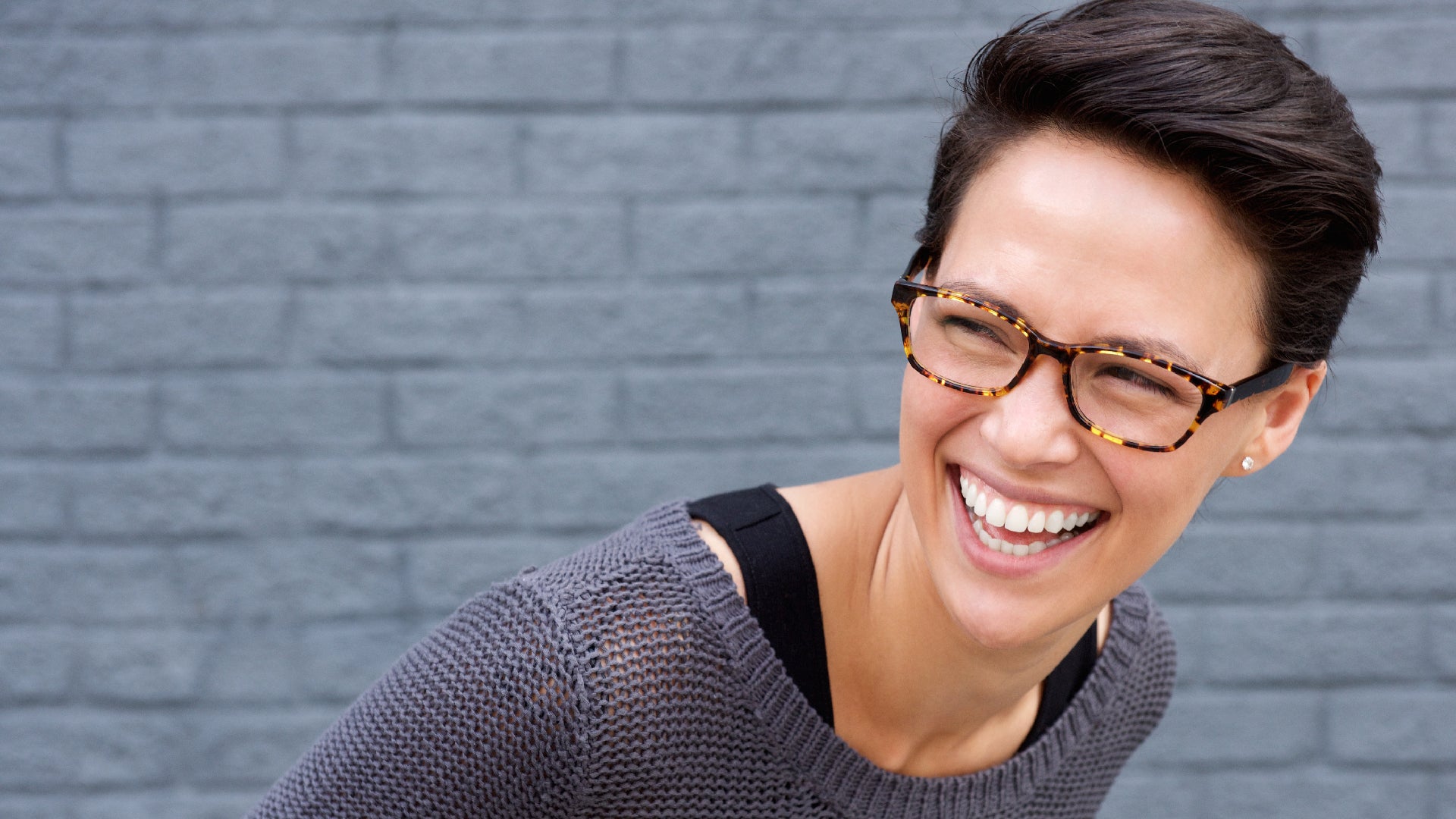
10 Beauty Buzzwords Everyone With Great Skin Knows
Raise your hand if you’re baffled by BHAs. Fess up if you’ve no idea what free radicals are. Well, you don’t need a doctorate in dermatology to help care for your skin, but knowing a few important terms is vital when it comes to nailing your skincare routine. Here are ten beauty buzzwords you really should know…
1. AHAs
AHAs stands for alpha hydroxy acids: otherwise known as the darlings of chemical exfoliation. AHAs are water-soluble acids extracted primarily from fruit or milk sugars and formulated within skincare to dissolve the bonds between dead skin cells so they naturally slough away from the surface of your skin. They’re the chemical equivalent to face scrubs or cleansing brushes, helping increase cellular turnover to keep your skin feeling soft and looking radiant and more youthful. The most commonly used AHAs in skincare are glycolic and lactic acids, but citric, tartaric, malic, mandelic are also good examples.
2. Antioxidants
An effective skincare routine is nothing unless it contains some kind of antioxidant. But what are antioxidants? Well, they’re basically molecules that prevent oxidative damage to your skin caused by free radicals (see below). They work by stopping free radicals from reacting with and damaging vital molecules like collagen, elastin and DNA which are essential for the health, strength and structure of your skin. When included in a balanced skincare routine, antioxidants such as vitamin C, vitamin E, niacinamide and retinol hinder oxidative stress and help reduce unwanted skin concerns like inflammation, sun damage, dullness, sagging, lines and wrinkles. They’re up there with cleanser, moisturizer and sunscreen as the most important weapons in your skincare arsenal.
Not sure where to start with antioxidants? Then go for a vitamin C serum. Vitamin C is not only the most highly researched antioxidant, but it’s a great all-rounder for brightening, protecting, strengthening and improving the quality of your skin. Just remember to always patch test topical antioxidants first as they can be pretty potent – especially if you have sensitive skin.
3. BHAs
Just like AHAs, BHAs (beta hydroxy acids) are chemical compounds used in skincare to boost cell regeneration and help exfoliate your skin. However, while AHAs are water-soluble, BHAs are oil-soluble which means they can penetrate beneath the skin’s surface to get deeper into your pores and clear out excess sebum. If you have oily skin or are prone to breakouts, BHAs should be right up there on your list of must-haves. And more good news, there’s really only one BHA you need to know: salicylic acid. Can we have a high-five for that?
4. Ceramides
Ceramides are lipids that make up around 50 percent of your skin’s composition and play a major role in the efficiency of your barrier function. Derms tend to explain ceramides as being the mortar that holds your skin cells (the bricks) together, helping to prevent water loss while protecting your skin from environmental pollution at the same time. Sounds simple enough, right?
The problem is that with age and environmental damage your skin’s natural level of ceramides drops dramatically, resulting in dryness, redness, irritation and dehydration. This is why as far as anti-aging ingredients go, ceramides are up there with the best. Look out for ceramide AP, ceramide EOP and ceramide NP written on your product labels.
5. Cruelty-Free
These days, there are so many misleading terms around clean, green beauty products it’s hard to know what you’re buying into. Are organic products always 100 percent natural? And does ‘vegan beauty’ mean the same as ‘cruelty-free’? Sadly not. In fact, the only way to guarantee you’re buying cruelty-free is to look for the Leaping Bunny logo. This internationally recognized symbol is an absolute promise to you that no animal tests were carried out in the development of any product that shows it on its packaging. We're super proud to be Leaping Bunny approved.
6. Free Radicals
Your skin is constantly exposed to environmental and lifestyle damage that work hard to cause what’s known as extrinsic aging – the term used to describe anything that contributes to how your skin ages other than, well, your age.
Why is extrinsic aging so powerful? Because free radicals. Free radicals are produced by the skin when it’s exposed to light, heat, pollution, stress and the like. They’re highly reactive, unstable atoms that like to snatch electrons from other atoms or molecules (think DNA, collagen and elastin) in a bid to stabilize themselves. This causes damage to all that good stuff in your skin and is one of the main reasons your skin becomes patchy, lined, wrinkly, saggy and so on.
Thankfully, for every skincare villain, there’s an even mightier superhero and in this case, it’s antioxidants. Unlike other skin components that become damaged when they lose electrons to free radicals, antioxidants have the special ability to donate them without losing stability. As we said before, antioxidants are the best.
7. Glycation
Speaking of extrinsic aging, glycation is another beast that works to ruin the look and feel of your skin. Glycation is when excess sugar molecules bind themselves to fat and protein molecules in the skin including collagen and elastin. These combine to form nasty little molecules called advanced glycation end products – or AGEs as they’re so aptly known. AGEs weaken and stiffen your collagen and elastin resulting in dullness, loss of elasticity and all the other visible signs of aging you know and hate. They also make your skin less able to defend itself from bad things like UV damage and cigarette smoke. Not good.
Obviously cutting down on refined sugars and high-fructose corn syrup are great ways to lessen the effects of glycation on your skin, but know that all carbs get converted into sugar by the body so watch what you eat. Everything in moderation and all that.
8. MSM
Otherwise known as methylsulfonylmethane, MSM is a naturally-occurring form of sulfur, one of the most important elements in the human body. Sulfur is often touted as the ‘beauty’ or ‘healing’ mineral because it promotes circulation, fights inflammation and plays a key role in the production and composition of collagen and keratin.
MSM is a sulfur compound that’s used in skincare to not only boost collagen and keratin, but to increase the production of glutathione – one of the body’s essential antioxidants. This makes it awesome for improving wrinkles, firmness, elasticity and dark spots and why we use it in all of our vitamin C products, including the fabulous new Vitamin C Deep Hydration Night Cream. Not tried this yet? You really must.
9. Noncomedogenic
Comedones is the fancy word for blocked pores. Blackheads, for example, are open comedones that have formed bumps and turned dark from oxidization, whereas whiteheads are those that remain closed and the same color as your skin. Once you get a grasp of this, the term noncomedogenic makes much more sense. Simply put, it means a product contains ingredients that have been tested to NOT clog your pores.
Unfortunately, like many skincare terms, the word ‘noncomedogenic’ is not regulated by the FDA, so while any product bearing this term is unlikely to clog your pores and cause a backup of oil and dead skin cells, it’s no guarantee. But it’s a good place to start, especially if you have super oily or pimple-prone skin.
10. NMF
While it might sound more like an early ‘90s alternative rock band, NMF actually refers to your skin’s natural moisturizing factor. Your NMF is a built-in moisturization system that’s located in the epidermis and contains a collection of powerful, naturally-occurring humectants such as amino acids, lactate, urea, minerals, sugars and peptides. These work together to draw in moisture and help protect your skin to keep it healthy, strong and supple.
As with sebum production, your NMF decreases with age which is why including humectants like hyaluronic acid, lactic acid and glycerin into your routine is so important – especially after you hit age 30.








